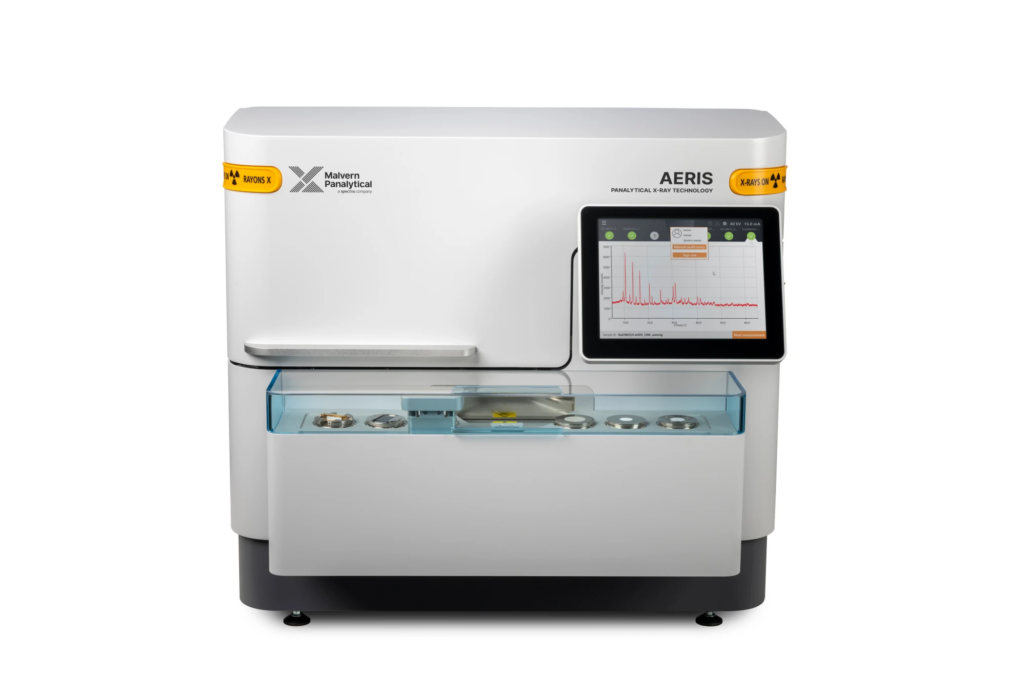
Materials Characterization
Simultaneous Thermal Analyzer ( STA 6000 )
The STA 6000 simultaneous thermal analyzer offers thermogravimetric analysis to measure the mass loss and heat flow associated with heating a sample. The instrument is capable of handling temperatures ranging from 15 °C to 1000 °C. Different reaction products in the sample decompose over different temperature ranges which is identified by the mass loss profile of the sample. The heat flow profile is used to identify the type of reaction products formed in the sample.
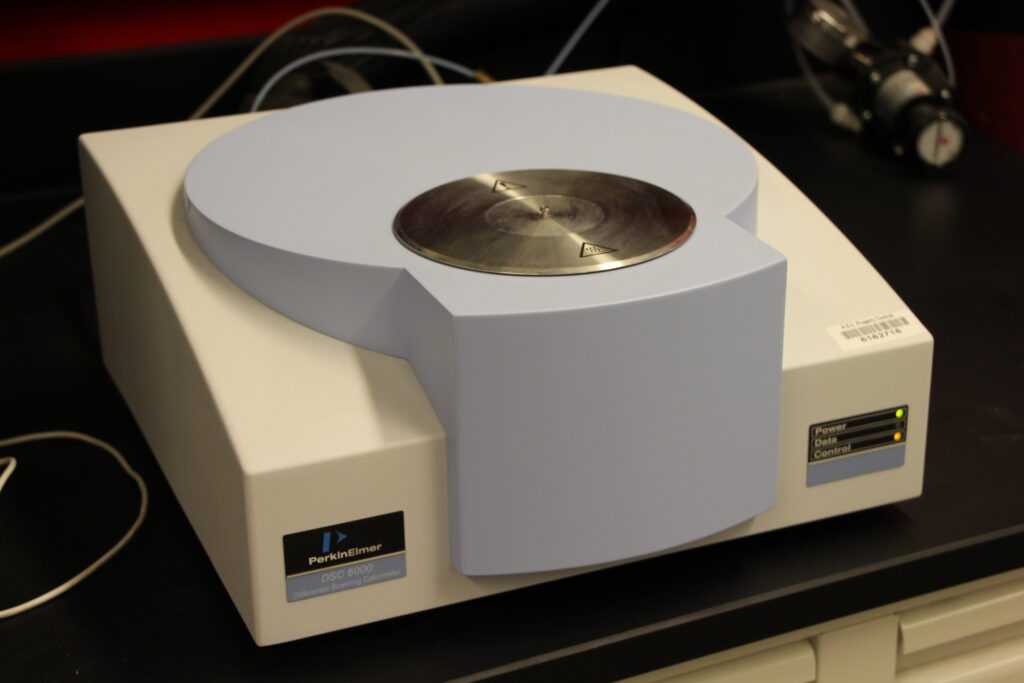
Differential Scanning Calorimeter ( DSC )
Differential scanning calorimetry (DSC) is a thermo-analytical technique that measures difference in the heat flow rate between the sample and the inert reference with varying time and temperature. The basic principle is that the sample absorbs or releases heat during a phase transformation and more or less heat flows in the sample as compared to the reference to increase the temperature by a specific amount depending upon the transformation being endothermic or exothermic. DSC keeps track of the amount of heat released or absorbed in such transitions by measuring the difference in heat flow between the sample and the reference and provides useful information about the phase transition temperatures of the sample. In DSC, samples should be distributed uniformly across the bottom of the pan. The pans are either alumina or platinum depending on the temperature range experienced or reactivity of the sample material with the pan material. For the determination of phase transitions, DSC scans can be carried out at various rates from 0.1 – 100 °C/min and can span a temperature range of – 80 °C to 600 °C. All scans are maintained and completed in a flowing – N2 atmosphere and take between 0.5 – 3h to complete (dependent on the rate).
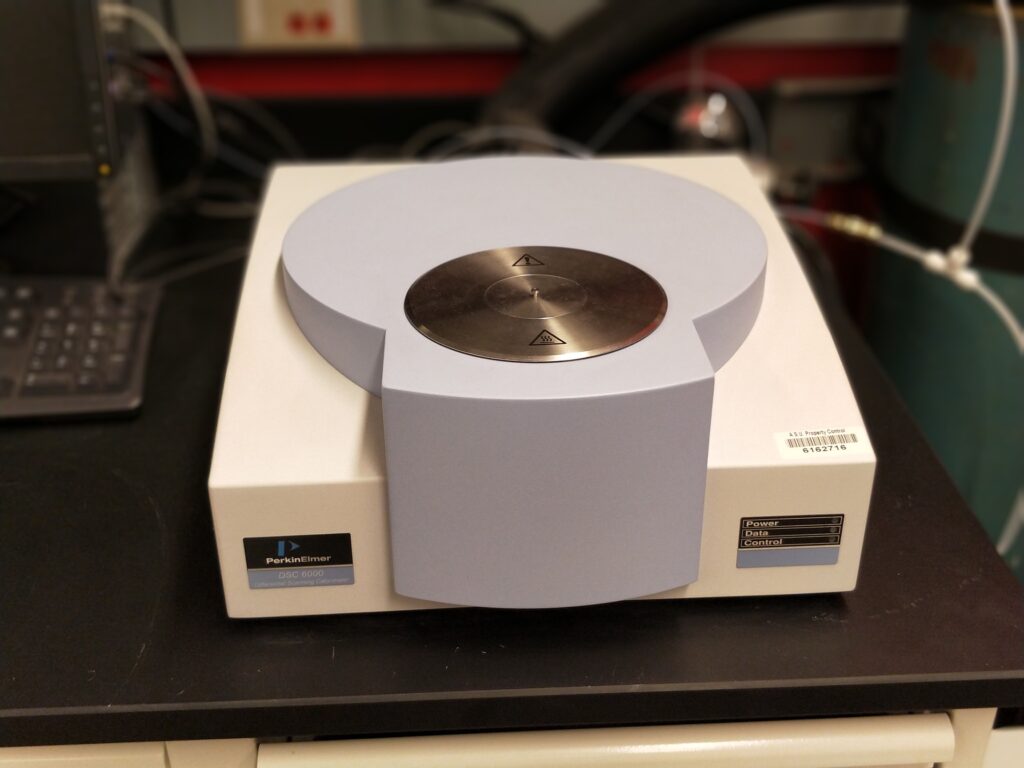
Isothermal Calorimeter (TAM Air)
The TAM Air isothermal calorimetry system provides the sample flexibility and measurement sensitivity to accurately characterize heat flow in a wide variety of materials. The 8-channel calorimeters are widely recognized as the instrument of choice for cement hydration analyses using ASTM C1702 and C1679. Unmatched baseline stability and signal-to-noise performance makes the TAM Air the best choice for the analysis of medium to high heat producing materials.

Isothermal Calorimeter ( I – Cal 8000 )
Every chemical reaction is associated with a typical heat signature which can provide significant information regarding the existence and formation of reaction products. The hydration process of cement is highly exothermic and is measured in milliwatt range. The shape of the heat flow curve versus time reflects the hydration processes in cement and the area under the heat flow curve is related to the degree of hydration of cement. I – Cal 8000 is an 8 – channel Isothermal Calorimeter. I – Cal 8000 features a sample size of up to 125ml, which can be used for multiple applications, including R&D and Investigative work on cement, mortar and concrete properties. The ambient temperature around the samples is computer-controlled by Calmetrix’ software interface, with precision sensors measuring the heat flow generated by the cement hydration reaction.
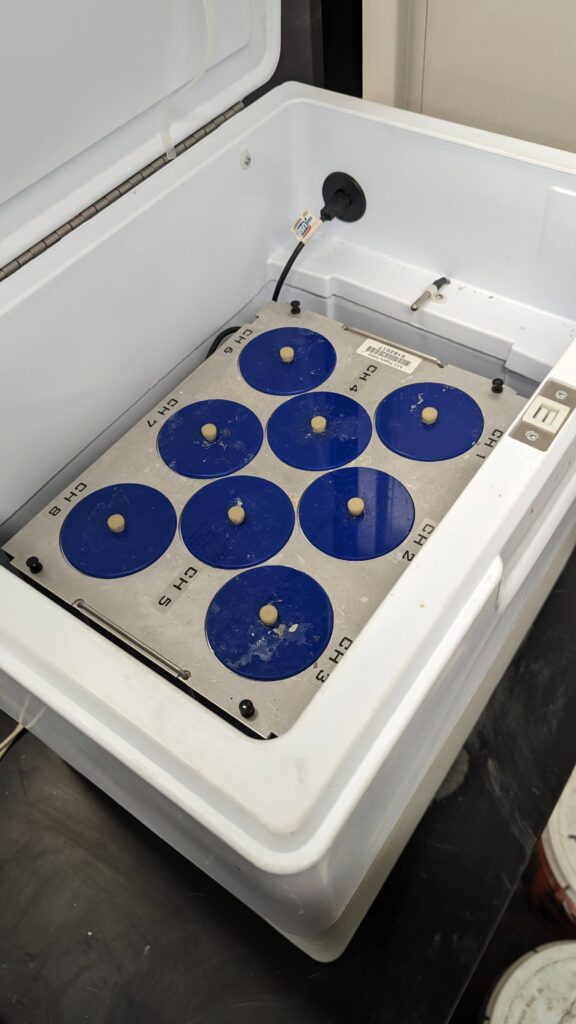
Mercury Intrusion Porosimetry ( MIP )
Mercury intrusion porosimetry (MIP) is a pore size measurement technique that uses non – wetting liquid penetration to measure the size and volume of pores in a wide range of porous solids. It is one of the most significant methods for characterizing porous materials over a pore size range from approximately 3 nm (depending on the exact contact angle between mercury and the solid surface) to approximately 1000 μ m. The mercury intrusion method allows pore sizing well above 500 nm – beyond the realm of gas physisorption. The required pressure to intrude mercury is inversely proportional to the size of the pores using Washburn equation.

Rheometer ( TA AR 2000 )
Rheological studies of cementitious suspensions provide an understanding of how these materials behave in the fresh state and serve to monitor structure development that dictates the development of the mechanical properties. Rheological experiments are typically carried out using a rotational rheometer, which monitors the change in torque required to change the shear rate (constant strain) or the change in strain required to change the torque (constant stress). The AR 2000 is the world’s most advanced rheometer. Its innovative Mobius Drive™ offers unprecedented controlled strain and controlled stress performance. The AR 2000’ ‘s unique features are its broad torque range, superior strain resolution, wide frequency range, and ingenious convenience features, like the Smart Swap™ interchangeable temperature control options. It is well-equipped to handle the most demanding rheological applications.
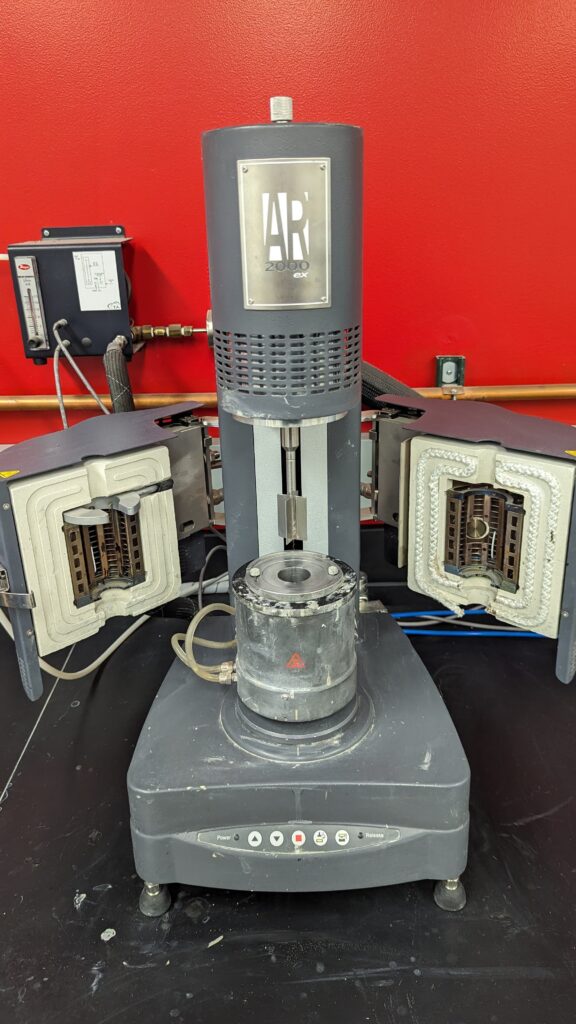
Atomic Force Microscope ( AFM )
Atomic force microscopy (AFM) or scanning force microscopy (SFM) is a type of scanning probe microscopy (SPM), with demonstrated resolution on the order of fractions of a nanometer, more than 1000 times better than the optical diffraction limit. The AFM probe is a sharp tip at the end of a flexible cantilever. The cantilever has a reflective coating. A laser hits the back of the cantilever and is detected in a photodiode. As tip moves laterally over regions of different materials and over topographic features, it will twist and generate a lateral signal. This signal is analyzed using a computer algorithm to generate an image of the surface.

GasPycnometer
The Ultrapyc gas pycnometer measures the density of solids and semi-solids, which can be used to track purity or porosity. There is a built-in Peltier temperature control and the measurements take less than 10 minutes. With temperature stability better than +/-0.05 °C and a broad temperature range (15 °C to 50°C), it offers quick temperature stabilization and offers reliable results for slurries, suspensions, gels, or any other material.
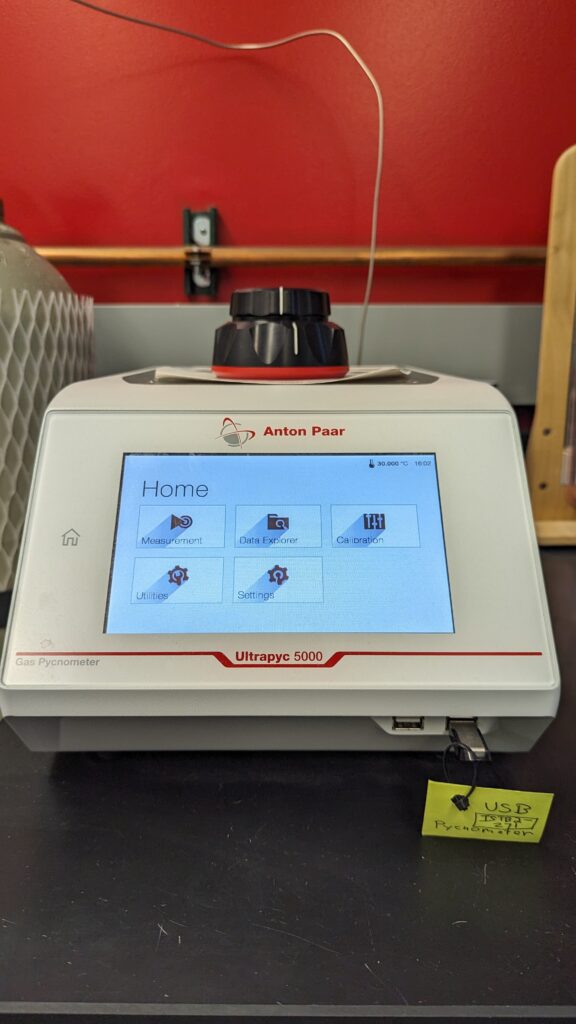
Digital Microscopes
Digital microscopes are a type of microscope that offers speed, convenience, and easy integration with a section of premium technologies. These devices are high – definition digital cameras built with mi croscopes’ zoom power and higher image resolutions. They use USB to connect to a monitor or other digital devices and transmit digital microscope imaging, which can be easily monitored, projected, or saved for later analysis.
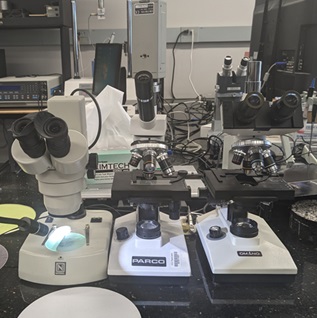
Electrical impedance spectroscope
The Solartron Analytical 1260A Impedance/Gain – Phase Analyzer is a highly regarded instrument for frequency response analysis, widely utilized in corrosion studies. With an extensive frequency range from 10μ Hz to 32MHz and an exceptional accuracy of 0.1%, the analyzer ensures precise measurements. The system, complemented by the renowned ZPlot software, facilitates impedance measurements, offering rapid data acquisition, accuracy, non – destructiveness, and adaptability across various applications.

Fourier Transform Infrared Spectroscope ( FTIR )
Attenuated total reflectance – Fourier Transform Infrared Spectroscopy (ATR – FTIR) allows for the determination of transmission spectra without destructive sample preparation. Spectra are obtained from the absorption or transmittance of a wave which is transmitted through an internal reflection element (IRE) of high refractive index and penetrates a short distance into the sample, in contact with the IRE. The IRE used is a diamond, selected because of its resistance to high pH and abrasion from sample removal and cleaning.

Thermogravimetric Analyzer ( TGA 5500 )
Thermogravimetric analysis is a quantitative technique that allows to measure the mass loss and heat flow associated with heating a sample. In the context of cement hydration samples, water held by different reaction products is lost at different temperatures. The mass loss profile is used to quantify the composition of the hydrated paste. The TGA 5500 is a high – performance thermogravimetric analyzer designed for precise measurements. It is built to maximize temperature control and minimize signal drift. This equipment has less drift than any competitive TGA. It also has a 25-position autosampler and can be used in temperatures ranging from ambient to 1200 °C. With its superior sensitivity and temperature control, this instrument is ideal for a wide range of applications such as compositional analysis, volatiles analysis, moisture content and thermal stability analysis etc.
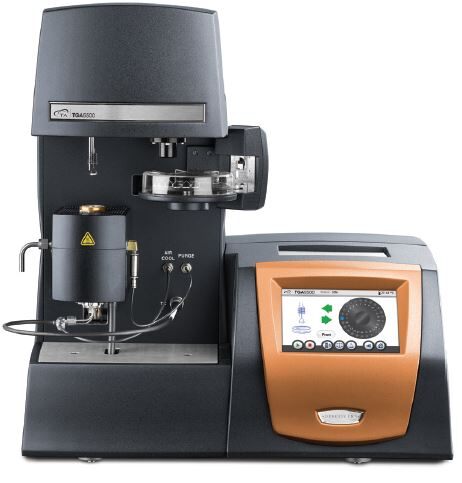
BET pore size analyzer
Pore Size Analyzers use the BET theory, which utilizes gas adsorption to determine surface area and pore size distribution of materials. Through the physisorption (adsorption by Van der Walls forces) of gas molecules onto a solid surface, the instrument calculates surface area by analyzing the adsorption isotherms, providing critical insights into material porosity. The BET pore size analyzer is capable of measuring surface areas from 0.01 m²/g to over 1,000 m²/g with great accuracy. It can also precisely determine pore size distribution in the range of 0.35 to 500 nanometers, enabling detailed characterization of micro and mesoporous materials. The instrument works well with a wide variety of materials, including catalysts, powders, and porous substances. This instrument offers multi – point and single – point BET analysis, allowing the assessment of sample porosity and surface characteristics.

PSA 1090 Particle Size Analyzer
Particle Size Analyzers operate on the principle of dynamic light scattering (DLS), employing laser diffraction to precisely measure particle sizes in suspension. This technique analyzes the intensity of light scattered by particles in a liquid, offering insights into size distribution by correlating the scattered light with particle dimensions. It has a measurement range spanning from 0.3 nanometers to 10 micrometers. The machine offers rapid measurements and has a customizable measurement cell to accommodate various sample types and concentrations, ensuring versatility and reliability in particle size characterization.

Litesizer Dynamic Image Analyzer – DIA 500
Litesizer DIA 500 employs dynamic image analysis to characterize particle size, shape, and transparency in dispersions and emulsions. It is equipped with high – speed camera technology to capture and analyze images of particles in motion, allowing the assessment of size distribution and morphological properties. It has a measurement range of 0.1 μm to 1 mm, and it can be utilized for the analysis of particles in various liquid dispersions. It also features automated measurements and customizable settings for diverse sample types too.
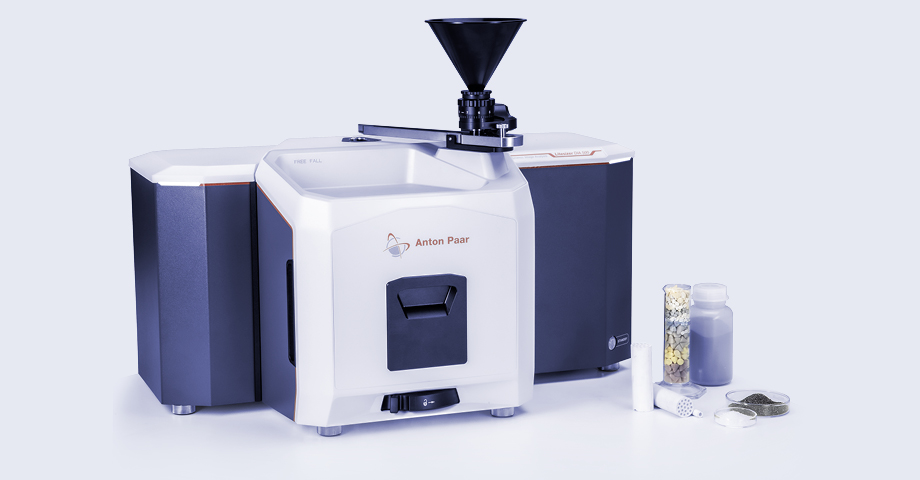
Fox 801 Thermal Conductivity Meter
The FOX 801 Heat Flow Meter is used for measuring thermal conductivity according to ASTM C518 and ISO 8301. It can operate both in standalone and PC – controlled configurations, where a small sensor applies a momentary heat pulse to the sample. By monitoring the temperature response over time, the instrument calculates the material’s thermal conductivity. It can be used for solids, liquids, powders, and pastes. The instrument features proprietary thin film heat flux transducers, digital thickness measurements, and responsive temperature control.
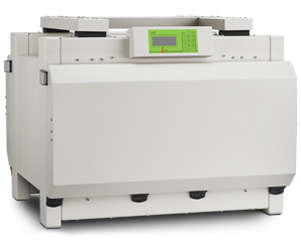
Benchtop X-ray Diffraction (XRD)
X-ray diffraction (XRD) is a non-destructive analytical technique used to analyze physical properties such as phase composition, crystal structure and orientation of powder, solid and liquid samples. Diffraction is the result of constructive interference between X-rays and the crystalline sample. The wavelength of the X-rays used is of the same order of magnitude of the distance between the atoms in a crystalline lattice, which gives rise to a diffraction pattern that can be analyzed using Bragg’s Law. Different crystalline phases give different diffraction patterns. Phase identification can be performed by comparing diffraction patterns obtained from samples to patterns in reference databases. The Aeris benchtop X-ray diffractometer is a cutting – edge instrument renowned for its versatility and precision in analyzing crystalline materials. The diffractometer operates using Cu or Co wavelengths. The instrument can characterize crystal orientation, degree of crystallinity, stresses in the crystal structure, spatial mapping of sample surfaces, high-speed wide – angle x-ray diffraction and reciprocal space mapping etc.
